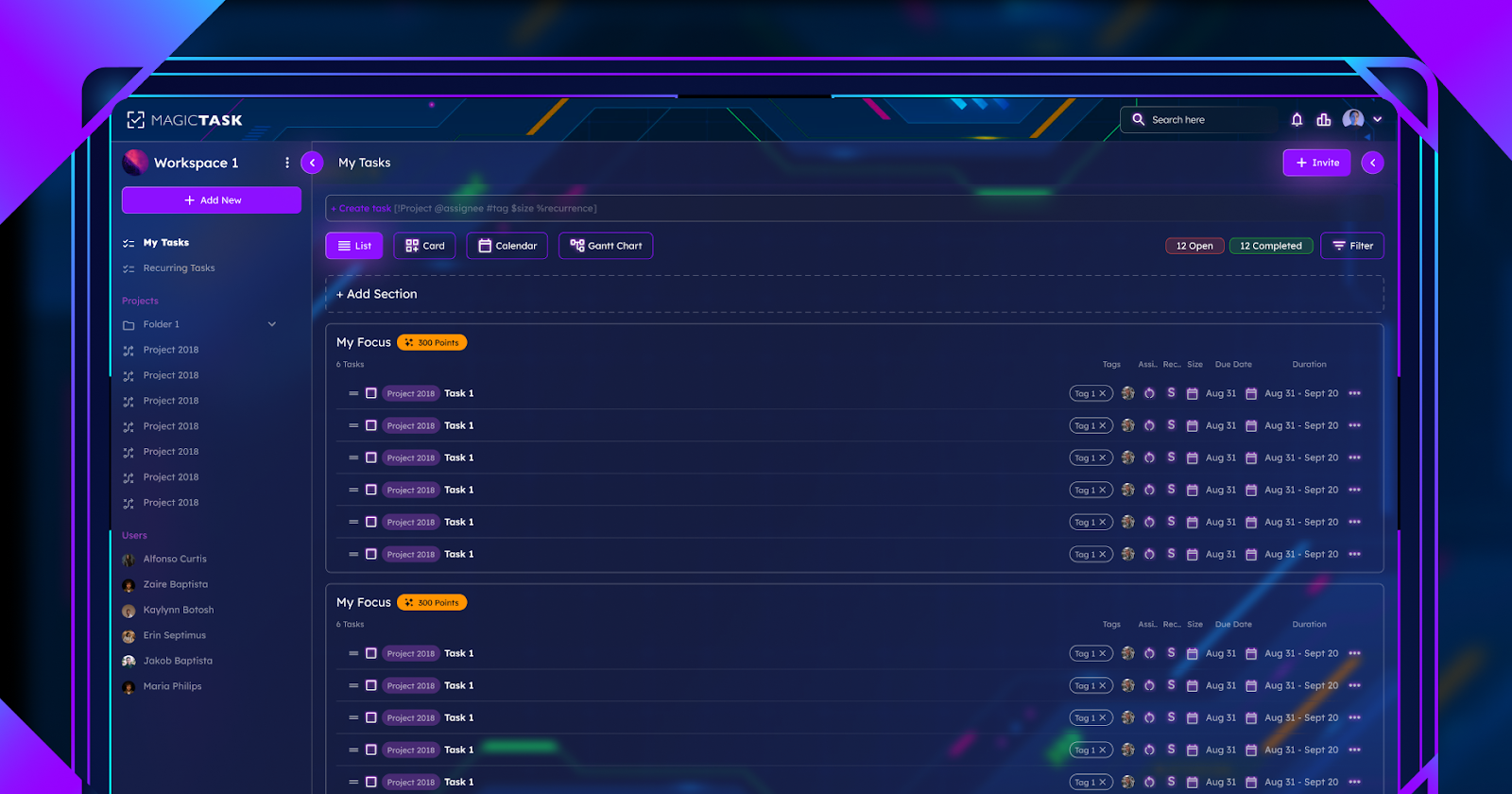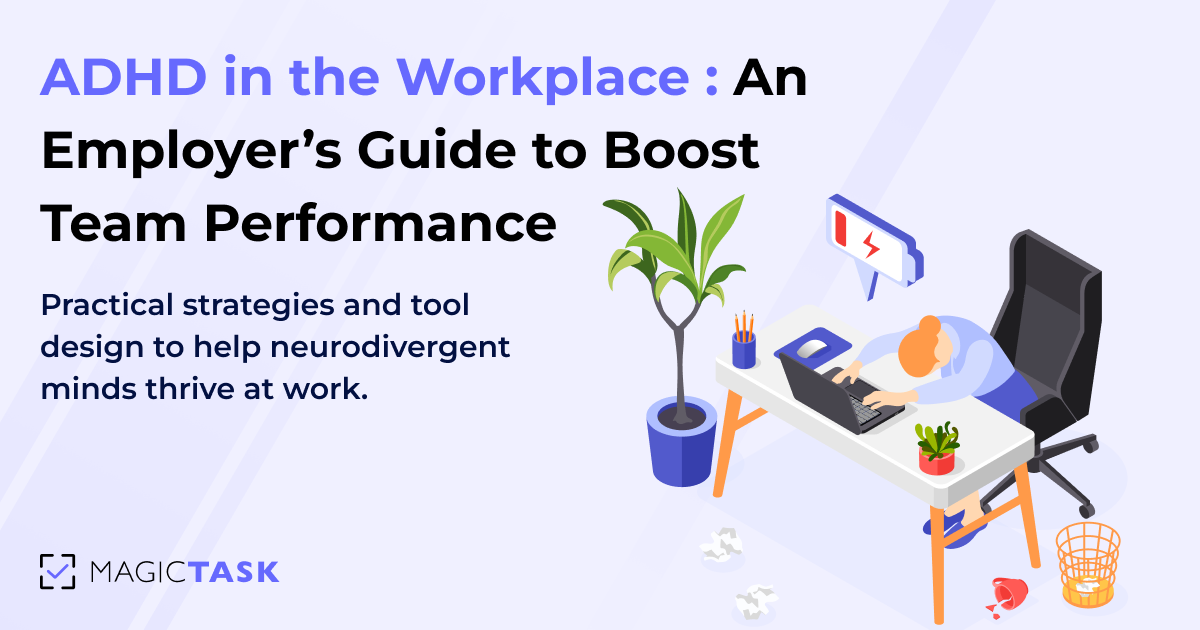The Evolution of Productivity Tools Over the Years

The evolution of productivity apps from basic task organizers to complex ecosystems indicates a dynamic change driven by changing work habits and technological advancements.
Initially, productivity tools were mere task and project management applications, but they have morphed into platforms incorporating automation, AI, and advanced user interface designs, among other technologies.
This change reflects the broader trend toward digital optimization, which aims to enhance individual productivity and team collaboration.
To understand the evolution of productivity tools better, we look at how the tools have developed over the decades.
The Genesis of Productivity Tools
The history of productivity tools can be traced back to the 18th and 19th centuries. At the time, people relied on pen and paper to document or express their thoughts and ideas. The emphasis here was on patience and meticulousness, not efficiency.
As expected, pen and paper were slow, tedious, and yielded little productivity, especially in spaces that handled many transactions, such as banks.
The typewriter overcome these challenges, revolutionizing productivity. Christopher Latham Sholes invented the first typewriter in the 1860s, paving the way to its popularity and invaluable role in offices and homes for decades.
Although the typewriter increased productivity in workplaces, earlier models often jammed, and the lack of shift keys to switch between capital and lowercase letters reduced efficiency. Sholes experimented with many other designs, culminating in the typewriter we know today, along with the famous QWERTY keyboard layout.
By comparison, this development enhanced users’ efficiency, speed, and productivity. Typewriters were famous for several decades until personal computers emerged in the 1980s.
The computers came equipped with word processors like WordPerfect and WordStar, which simplified formatting, editing, and spell-checking capabilities, solving most problems encountered when using the typewriter.
The emergence of Microsoft Word software further enhanced productivity in workplaces because it made writing, sharing digital files, and editing even simpler.
Another tool that shaped the genesis of the productivity tools was the Rolodex. Developed in 1956, it was the earliest CRM system invented. The device stored customers’ contacts to enable companies to track customer interactions.
However, finding contacts using the Rolodex was painstakingly slow and tedious, especially for sales and marketing professionals who needed to be in constant liaison with customers. As such, developers invented CRM software which centralized customer data and enhanced productivity.
The discovery of the Internet in the 1990s saw CRM applications take a giant leap forward. Developers could now harness its capabilities to allow businesses to access customer data from anywhere in real time. This feature is still handy in modern workplaces for employees working remotely.
Today, CRM software is an all-in-one solution, helping sales, marketing, customer service, and data analytics departments to tailor interactions and deliver the best customer experiences. An all-in-one solution enhances productivity and enables businesses to save costs because they don’t need to set up software for each department.
The Era of Internet-based Tools
The emergence of the Internet in the 1990s significantly revolutionized productivity tools. It led to the discovery of new tools that have transformed how we communicate, store, and share documents.
Email, or electronic email, was one of the productivity tools developed during this period. It was created in 1971, but its prevalence increased in the 1980s and 1990s. It has since evolved into a personal and business communication tool, as evidenced by renowned email clients like Hotmail and Yahoo.
Google entered the scene later, and it has since dominated this space. The company introduced an electronic email program and a tool to store documents, providing up to a gigabyte of storage. This incentive attracted many users to the program.
Today, email has become an invaluable part of our lives and enhancements such as multimedia content, security, and personalization make it a critical communication and productivity tool.
Marketers send personalized emails to potential clients based on preferences, user behavior, and demographics. Extra features like videos, images, and GIFs make the texts more engaging than plain texts, capturing the user’s attention longer.
Cloud computing is another productivity tool discovered during the Internet era. Although the concept can be traced back to 1963, it only became prevalent in the late 1990s with Salesforce being the first company to apply the technology.
Cloud computing allowed anyone with internet access to access programs. As a result, purchasing software on demand was easy, saving businesses time and money.
While emails eased communication between professionals, they needed to collaborate when working on a common task. This need birthed another productivity tool: collaborative software.
Its roots can be traced back to the 1940s, but it wasn’t until the 1980s that it became a buzzword. The pioneer, educator C.A. Skip Ellis, developed it to support groups of people working on a common task, and he referred to it as groupware.
The software became prevalent in the 1990s as developers leveraged the Internet and cloud computing to develop Internet-based applications that enhanced collaboration and the formation of online communities.
Collaborative software has since evolved from mere communication tools to conferencing mediums and now to coordination tools. Today, professionals can work on a single document via collaborative platforms like Google Docs.
The Mobile Revolution and Productivity
The mobile revolution has undoubtedly transformed the work landscape. Just as smartphones have become invaluable in our lives, they also make an employee’s life more comfortable and satisfying.
A study of 1500 U.S.-based workers found that 62% of the respondents agreed that mobile devices played a vital role in enhancing productivity. Smartphones now support sophisticated email, video conferencing, instant messaging, and collaboration apps, allowing employees to work from anywhere at any time.
Whether working from home or the local coffee shop, workers can work on complex projects, communicate with team members, and coordinate tasks using mobile devices. This level of flexibility motivates employees to do their best.
Moreover, task management tools, private clouds, and video conferencing software help manage tasks, share information, and communicate in real time.
That’s why more corporations provide their employees with apps to facilitate remote business operations. And, these mobile device management solutions are optimized to avoid data and network security breaches.
Also Read: Revolutionizing Workplace Culture with MagicTask V3: A Game-Changer for Company Owners
A.I. and Automation in Productivity Tools

While flexibility at the workplace is critical, more organizations are shifting focus to maximizing efficiency and effectiveness. AI-powered productivity tools help meet these needs by optimizing work processes, augmenting output, and facilitating more intelligent decision-making.
AI productivity tools can be traced back to the mid-20th century, when AI was primarily developed to mimic human thinking to help solve complex problems. Machine learning and computing power followed suit, further enhancing AI capabilities by introducing task automation.
That’s why modern AI productivity tools can perform tasks autonomously, ranging from data analysis to communication and information retrieval. They help organizations automate repetitive tasks like data organization and scheduling meetings, freeing up valuable time for employees to focus on high-value tasks.
Tools like Google Calendar and Microsoft Outlook use AI to suggest optimal meeting times and automatically organize tasks.
Similarly, virtual assistants like Apple’s Siri, Google Assistant, Amazon’s Alexa, etc, help manage tasks through voice commands, set reminders, answer questions, and control other smart devices, enhancing overall productivity without manual intervention.
Future Trends in Productivity Tools
Thanks to advancements in artificial intelligence, machine learning, and evolving workplace dynamics, future developments in productivity tools are poised to be transformative.
The integration of blockchain technology, for example, will likely enhance security and transparency during data handling, addressing the growing concerns about data in this digital age.
We’ll also see a surge in integrating virtual and augmented reality technologies to create more immersive and interactive user experiences.
When used with AI and automation, these advancements signal a future where productivity apps enhance efficiency and reshape how we conceptualize and execute tasks.
A shift towards cloud-based development environments will also increase to provide flexible and scalable solutions that cater to the dynamic needs of developers and businesses alike.
The premise is to create environments that enhance team collaboration, minimize operational costs, and streamline app development processes. This makes cloud-based development environments attractive to organizations of all sizes.
Embracing the Hybrid Work Model
We can’t overlook the evolving nature of modern workplaces. Many organizations now support hybrid work models to allow employees to work as they please.
Some employees work better in an office, while others prefer working from home without commuting, and balancing their needs enhances productivity.
Productivity tools are critical in supporting hybrid work environments by improving communication, collaboration, and an organization’s overall efficiency.
Messaging platforms like Zoom, Slack, and Microsoft Teams facilitate real-time communication, while project management software like Trello and Asana help teams manage tasks, track progress, and collaborate on projects efficiently.
Cloud storage services like Dropbox and Google Drive allow teams to store and share documents in real time, allowing remote and in-office employees to collaborate seamlessly.
Final Thoughts
The evolution of productivity tools is a testament to our relentless pursuit of efficiency, collaboration, and innovation. From the humble beginnings of pen and paper to the sophisticated AI-powered tools of today, we've come a long way. As technology continues to advance at an unprecedented pace, the future of productivity tools is incredibly exciting. We can anticipate even more integrated, intelligent, and intuitive tools that will seamlessly blend into our work and personal lives, empowering us to achieve more than ever before.
If you're ready to experience the next generation of productivity tools, look no further than MagicTask. Our gamified task management system is designed to make your work more enjoyable and rewarding. With features like themes, rewards, and challenges, MagicTask transforms mundane tasks into engaging experiences. Don't get left behind in the productivity revolution – try MagicTask today and unlock your full potential!




